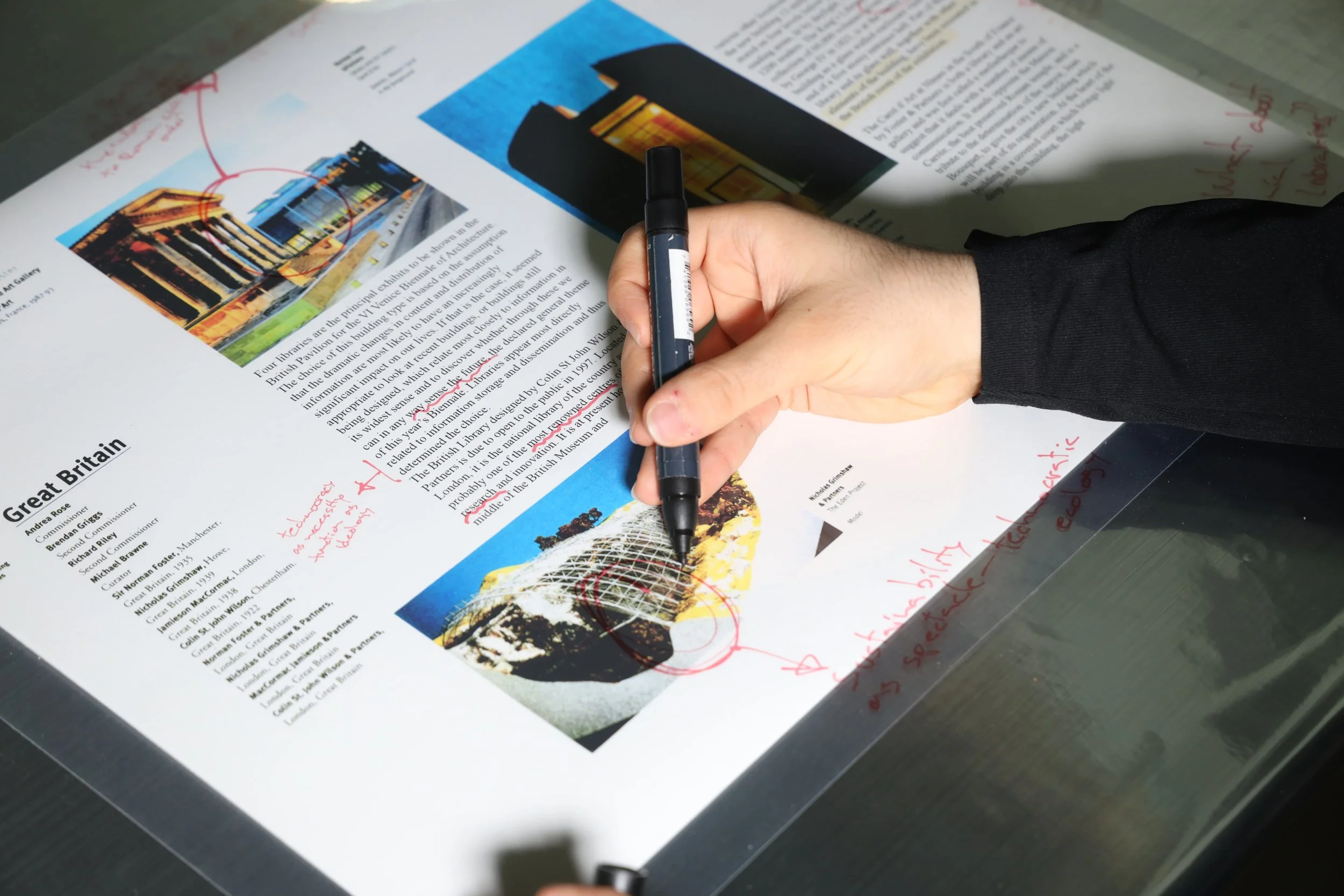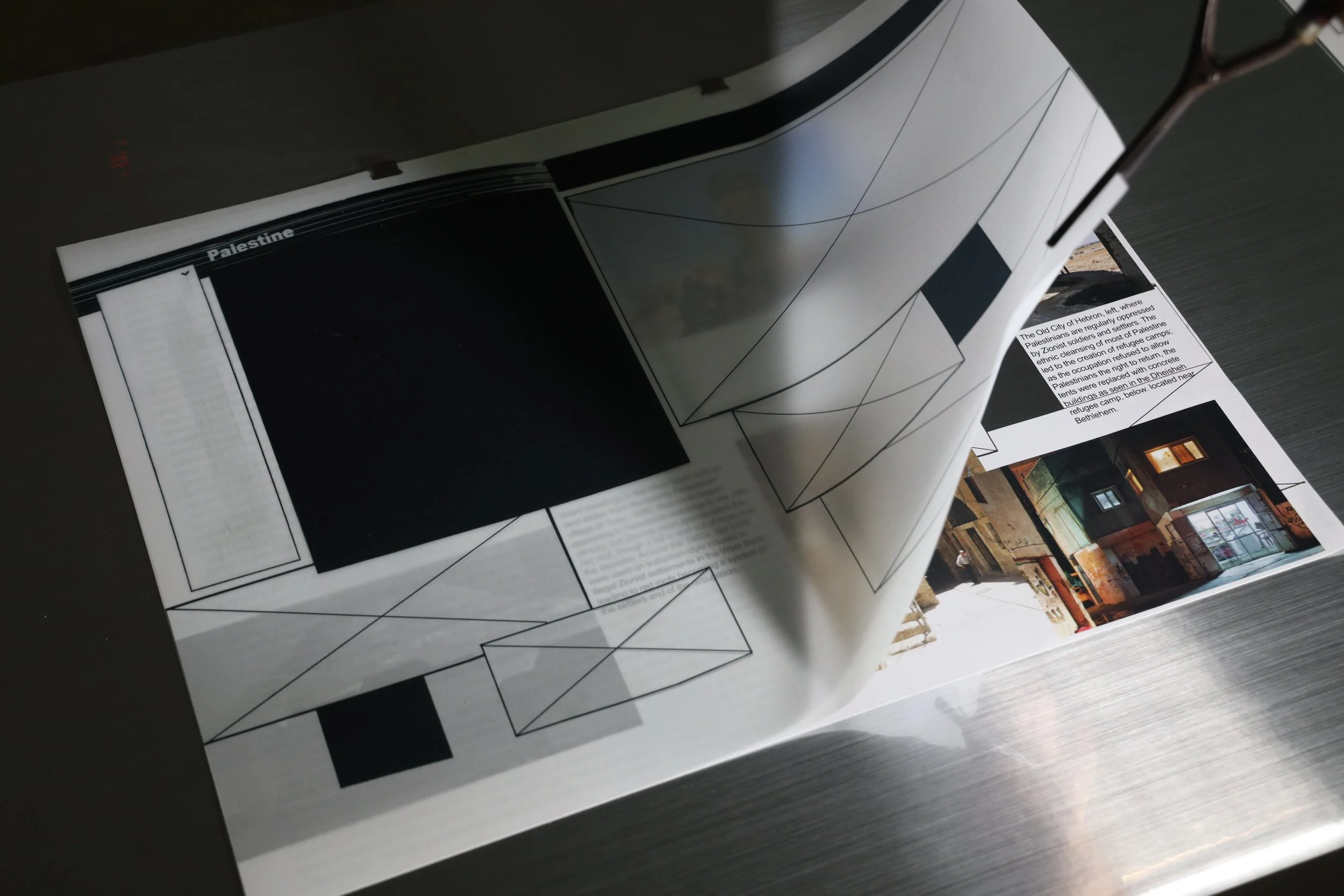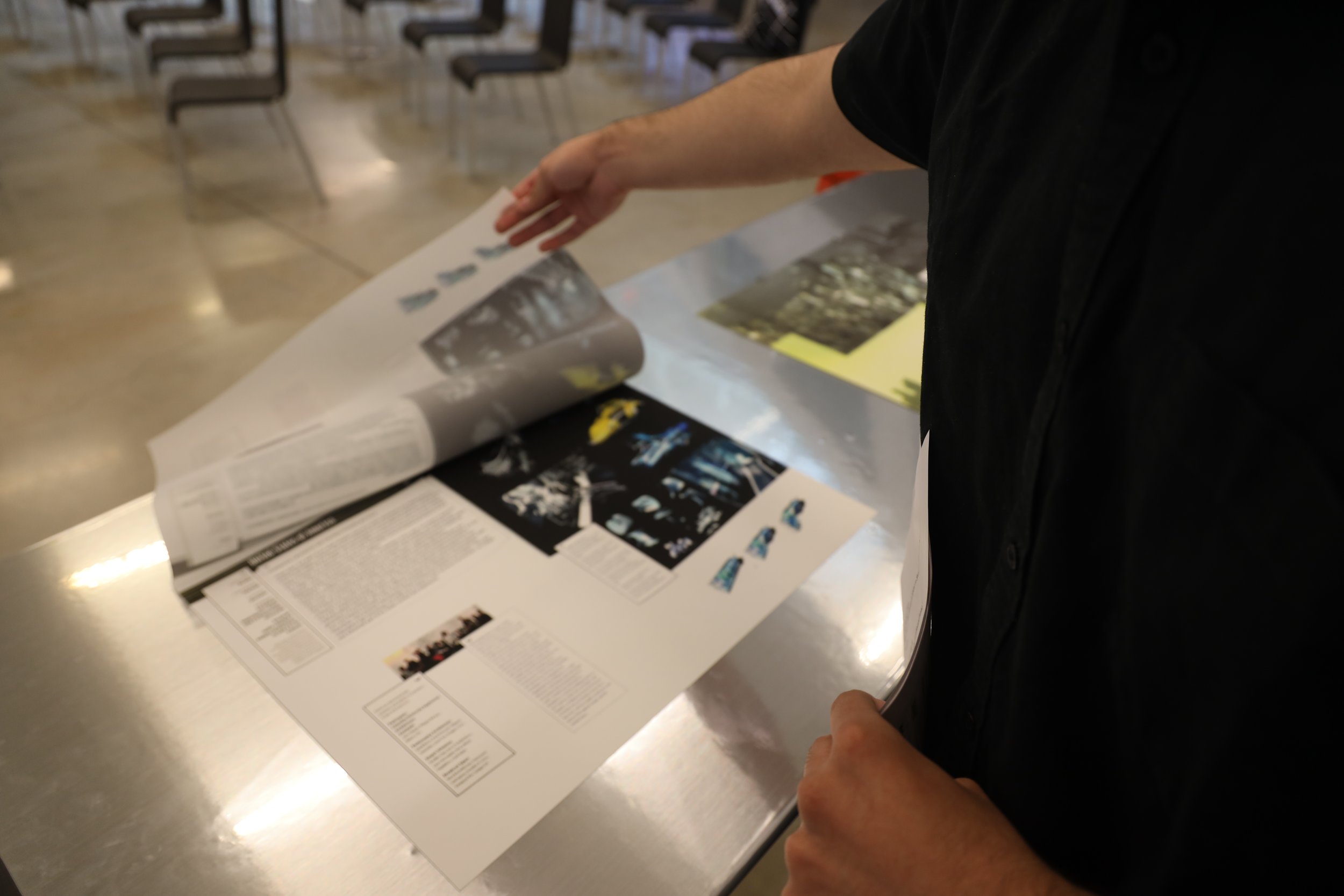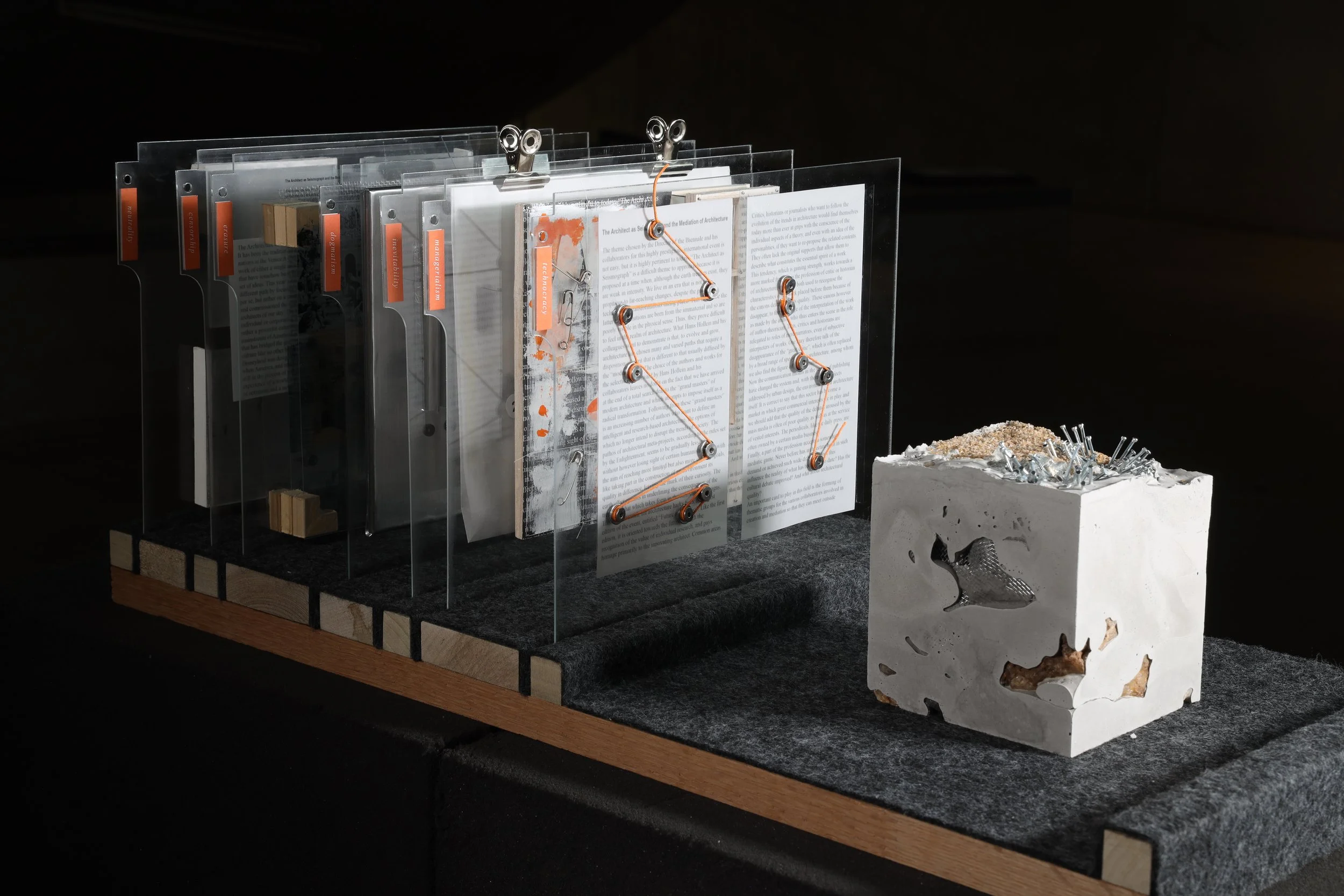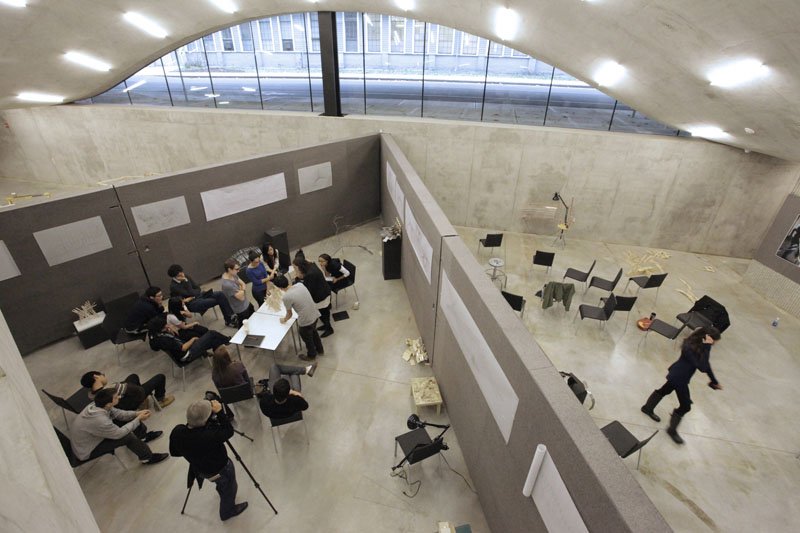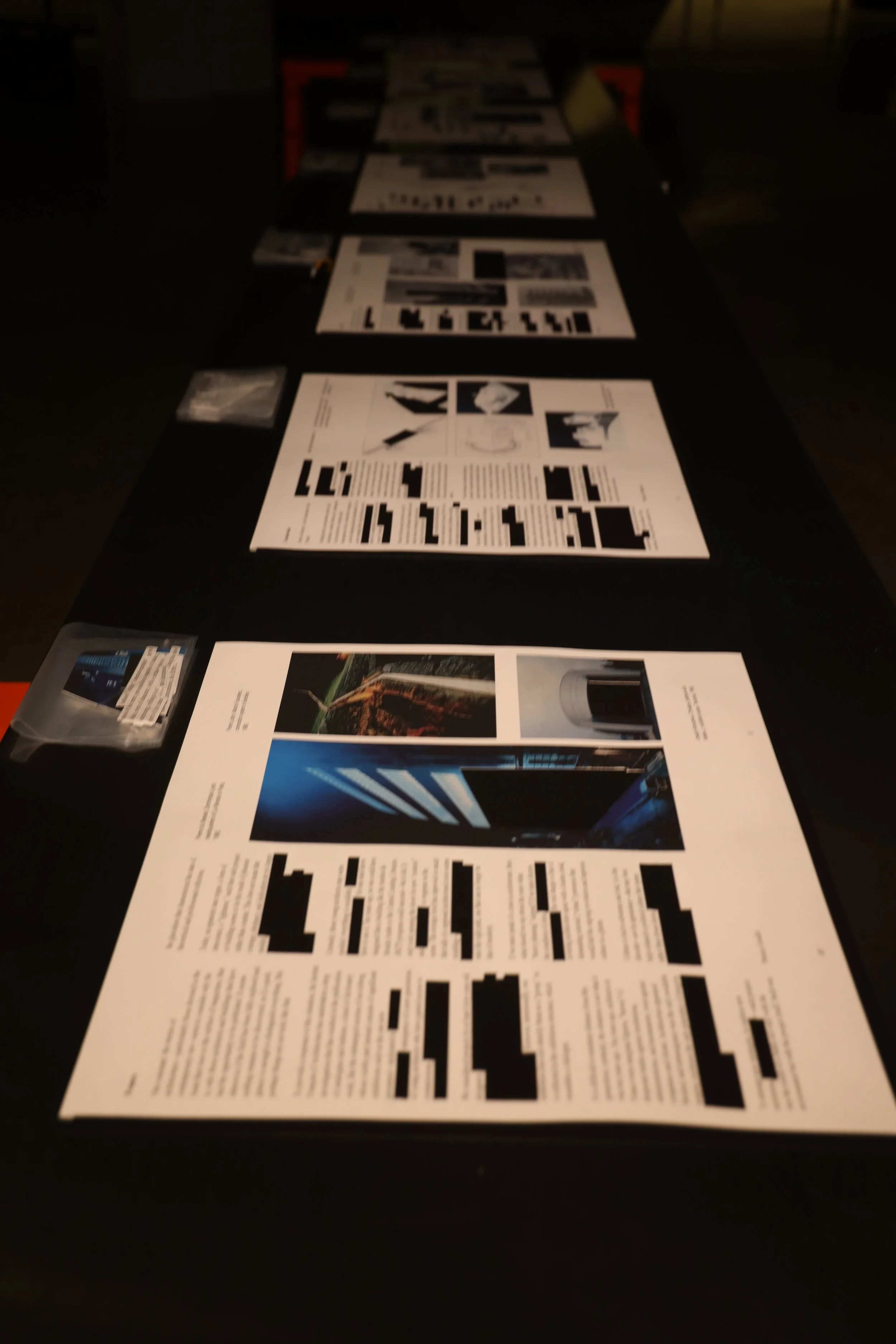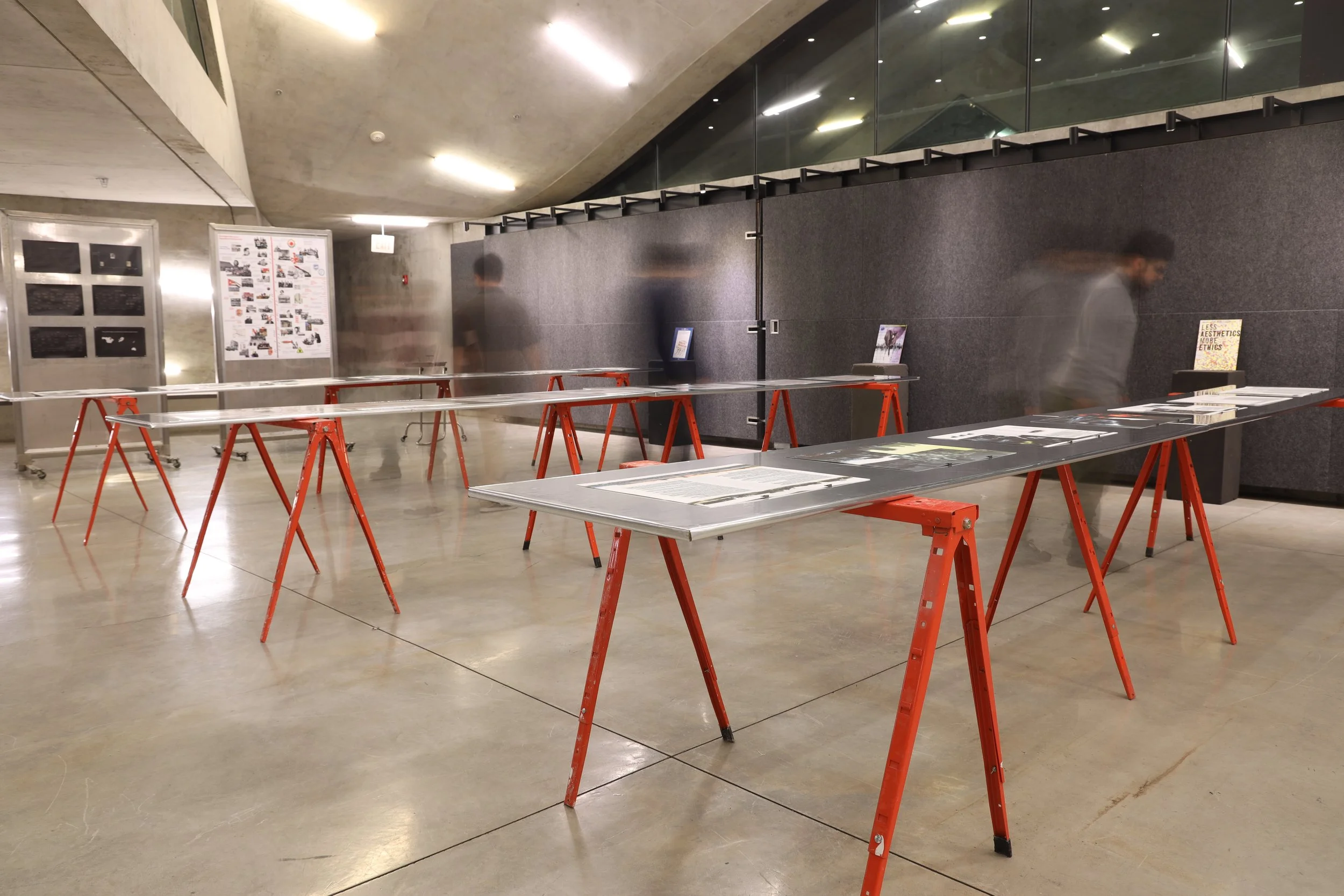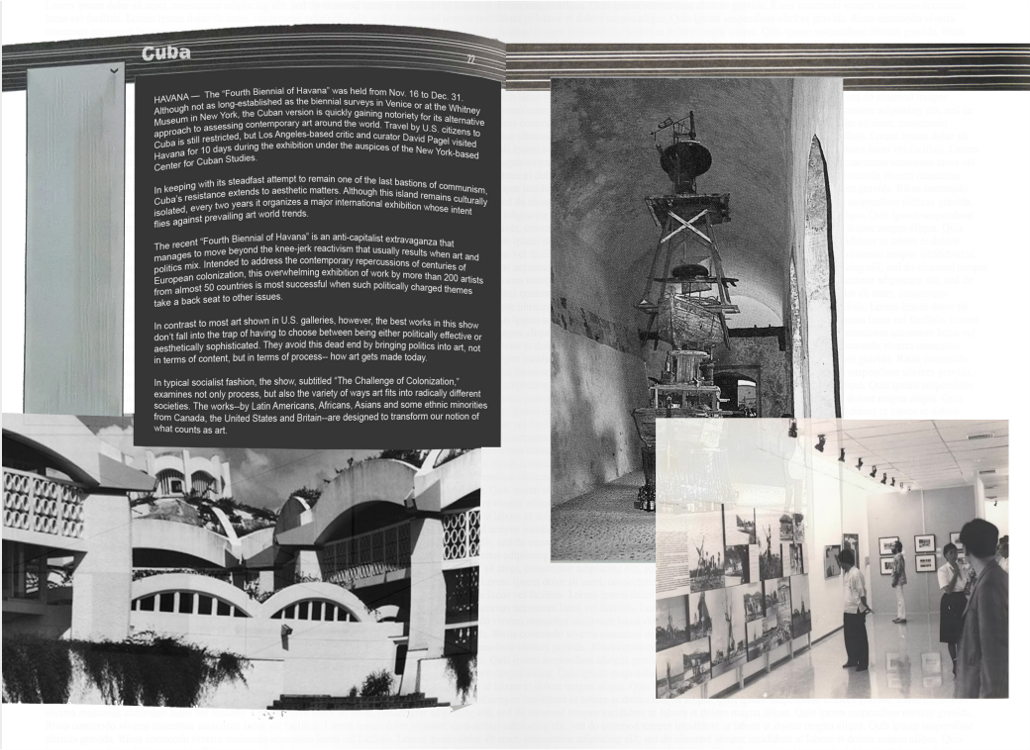GEOPOLITICS OF ABSENCE
GEOPOLITICS OF ABSENCE
Retroactive Editing for the Venice Architecture Biennale 1991-2000
Curators:
Filip Galic, Mengmeng He, Anusha Dasgupta, Jebreel Youssef Bessiso, Nguyen Doan,Yash Mangukia
Curatorial Statement
What kind of history is produced at the Venice Architecture Biennale? One of the most influential venues for architectural discourse has seldom engaged history-writing as a curatorial objective, however, it is itself deeply historical. It is, in its form and repetition, a site where narratives are assembled and disseminated; a space where architecture serves not only as aesthetic proposition or technological promise, but also as a medium through which particular futures—and their corresponding pasts—are imagined, negotiated, and naturalized. This exhibition engages the Biennale as a form of spatialized historiography, a recurring event whose omissions and emphases are harbingers of broader transformations in architecture’s epistemological and geopolitical alignments. Focusing on the period between 1991 and 2000—a decade marked by the proclaimed “End of History”—we understand these iterations of the Venice Biennale as sites of historical erasure. The Cold War ended, the Non-Aligned Movement receded into silence, and global consensus emerged not as a political achievement, but as a managerial fait accompli. We ask then: What kind of political imaginary is constructed through the absences of particular geographies?
This exhibition begins in the margins of the Biennales catalogues, footnotes, curatorial introductions, and captions. Our retroactive editorial interventions—redaction, revision, and redress—reveal the abundance of euphemisms for previous concepts. At the “end of history” conflict had become complexity; cultural commodification was reframed as authentic placemaking; surveillance infrastructures were celebrated as smart cities; and political representation was replaced by stakeholder engagement. Such shifts signal architecture’s entanglement in the post-political condition—where antagonism is bracketed, difference is rendered manageable, and structural inequality is trivialized to be treated with technical solutions. The exhibition revisits the Venice Biennale during this period through the lens of the NonAligned world’s disappearance. Rather than recuperating these absences nostalgically, the exhibition seeks to engage them critically. What imaginaries were displaced to make space for consensus and managerial legibility? Through retroactive editing, we aim to destabilize the authority of the archive—not by adding more content, but by making visible its scaffolding. In doing so, we invite not only a re-reading of the Biennale’s past, but also a reconsideration of how architectural history is assembled, circulated, and contested in the present.
What kind of geopolitical imaginary is constructed through these absences?
And further, how do these absences sediment themselves into the textual, visual, and spatial structures of exhibition catalogs and curatorial language? The research treated the disappearance of the Non-Aligned not simply as an event but as a formal mechanism of constructing the “world”—a quiet but forceful redrawing of who gets to participate in the global, and on what terms. This inquiry became inseparable from the editorial method that informed the reparative gesture. It was not enough to write about the occlusion of NAM voices; the very grammar of curatorial documents had to be retooled, their temporality dislodged, their silences rendered legible. The three editorial modes—Redact, Revise, Redress—each sought to perform this task differently. But all were grounded in that original provocation: that the geopolitical silences of the late twentieth century were not inert absences, but active constructions of a universal consensus, a world without any antagonism.
Rob Nixon’s concept of slow violence describes gradual, dispersed forms of harm that unfold over time, often invisible to public discourse. This framework is essential to understanding the impact of Structural Adjustment Programs (SAPs) imposed on Non-Aligned Movement (NAM) countries after the 1973 Oil Crisis. Rather than entering the global economy through mutual development, these nations were coerced into neoliberal reforms—privatization, subsidy cuts, and trade liberalization—under IMF and World Bank directives.
These reforms eroded public health, education, and welfare systems, replacing postcolonial developmental regimes with austerity-driven governance. The violence was not immediate but materialized through hunger, infrastructural collapse, and the loss of social futures. In countries like Zambia, Mozambique, and Nicaragua, SAPs destabilized institutions and deepened inequality, often leading to conflict and state failure.
This slow violence also manifested in cultural exclusion. The absence of many NAM countries from platforms like the Venice Architecture Biennale is not coincidental—it reflects economic attrition that left them without the resources to participate. Thus, global cultural visibility became another site of structural erasure, where presence signals power, and absence reflects a history of managed decline.
NAM Temporal Cross-Section
Redact
Editing the 1991. Venice Architecture Biennale Catalog
Revise
Editing the 1996. Venice Architecture Biennale Catalog
Redress
Editing the 2000. Venice Architecture Biennale Catalog

